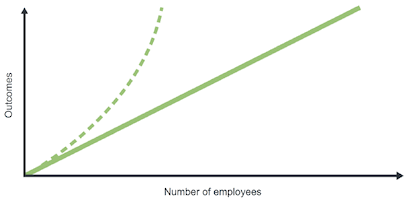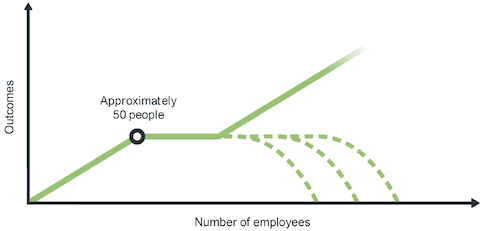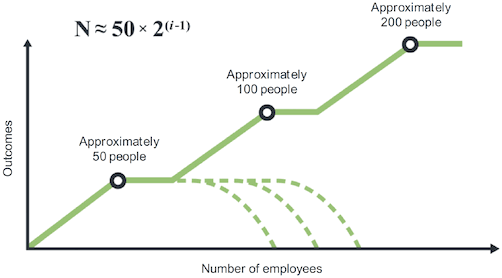Scottish technology ecosystem: review
Review of the Scottish tech ecosystem by Mark Logan, commissioned by the Scottish Government, with recommendations on how to develop a world-class tech sector.
Appendix A – Why can’t start-ups scale?
This appendix supports the section Ecosystem Supporting Categories – Education with a deeper illustrations as to the importance of founding-team education to start-up success.
There are two main reasons that start-ups fail. Either the start-up’s product or service doesn’t fit the intended market, or it does but the organisation isn’t capable of supporting and driving growth subsequently. The first issue is referred to as “finding product-market fit (PMF)” while the second is often called “organisational scaling”.
Product-market fit (PMF)
It’s generally not well understood within the Scottish ecosystem (and many others) how a start-up should go about the process of iterating its product or service to the point where it fits the needs of its market. This is an extremely important point because, once this has been achieved, the start-up’s strategy shifts to one of scaling its markets and scaling its organisation to support that growth.
It is very common to see start-ups declare that PMF has been achieved, and start to attempt scaling when, in fact, the market isn’t interested in the product. This situation always ends unhappily. The Silicon Valley has a well establish playbook for how to go about this process and how to measure progress to the PMF goal. It’s vital that this playbook is widely understood within our ecosystem.
Organisational Scaling
Of those start-ups that do establish PMF, most will still fail to grow to scale due to fundamental errors in managing subsequent organisational growth. In regard to this point, it’s interesting to note how many start-ups that appear to have PMF fail to expand their team size much beyond 30-40 people. The common pathology is that a series of organisational “micro-implosions” happen as the organisation attempts to expand, resulting in staff leaving, management being changed out, and so on. The process then repeats. And so, the start-up is unable to fully exploit its market potential. What’s happening inside those organisations?
Consider the following chart, which plots the Outcomes intended by a business (a start-up or scale-up, for example) against the number of employees in the business. “Outcomes” here is meant in the context that’s relevant to the particular start-up in question; for example, products shipped, customers won, etc., these are all examples of desired Outcomes. What every start-up wants to achieve is the dotted-line outcome – outcomes grow faster with each new hire. But most would settle for the solid line – as more people join the business, more outcomes are generated.

In reality, the following pattern is far more common – at around 30-50 employees, outcomes start to level off as more employees are added. A minority of start-ups make it through this stage (following the path of the solid line), but many more fail to do so, and eventually follow one of the dotted-line paths.

If the organisation does make it past this inflection point, then others are waiting; a similar inflection point will occur around 100 employees, around 200 employees, and so on. The pattern is almost geometric. But, at each stage, fewer and fewer businesses move on from that inflection point:

What’s causing this to happen? The organisation is a combination of three things:
- Its people, and their capacity and ability to perform the work required at a given level of scale (e.g. manage ever larger teams, etc.);
- Its processes (that those people operate);
- Its structures (within which the people operate those processes).
At each inflection point, these three fundamental elements “scale-out” in some combination – what worked at a smaller level of scale breaks at the next level.
Scaling a tech business (or, indeed, any businesses) is largely about recognising these inflection points as they arise and knowing either what organisational patterns to use at the next level of scale or knowing how to change the organisation to navigate past the inflection point.
This is particularly a problem for Internet Economy tech start-ups because, once PMF has been achieved, available markets tend to exhibit rapid scalability, requiring the organisation often to rapidly scale too, in support of that growth.
The problems described above – finding PMF and organisational scaling – underline the requirement for the start-ups and scale-ups in Scotland’s ecosystem to understand these methods ahead of time, and not after the fact; hence the requirement for outstanding educational support for founding teams in these businesses.
Contact
Email: loganreview@gov.scot
There is a problem
Thanks for your feedback